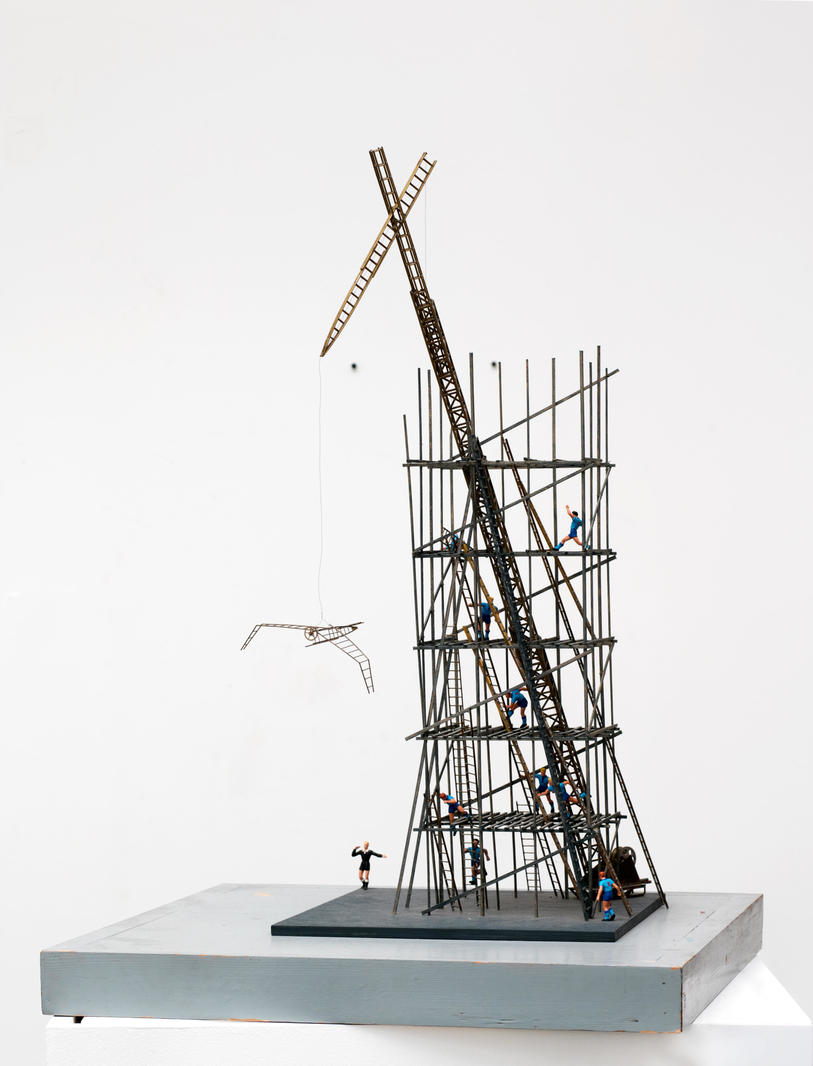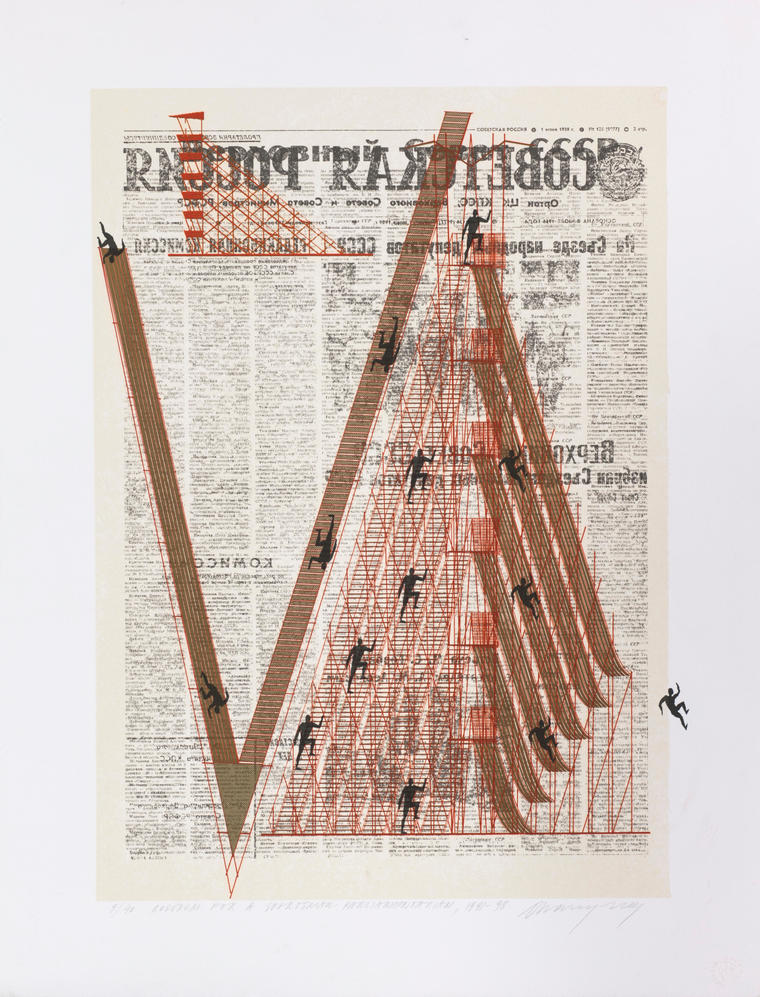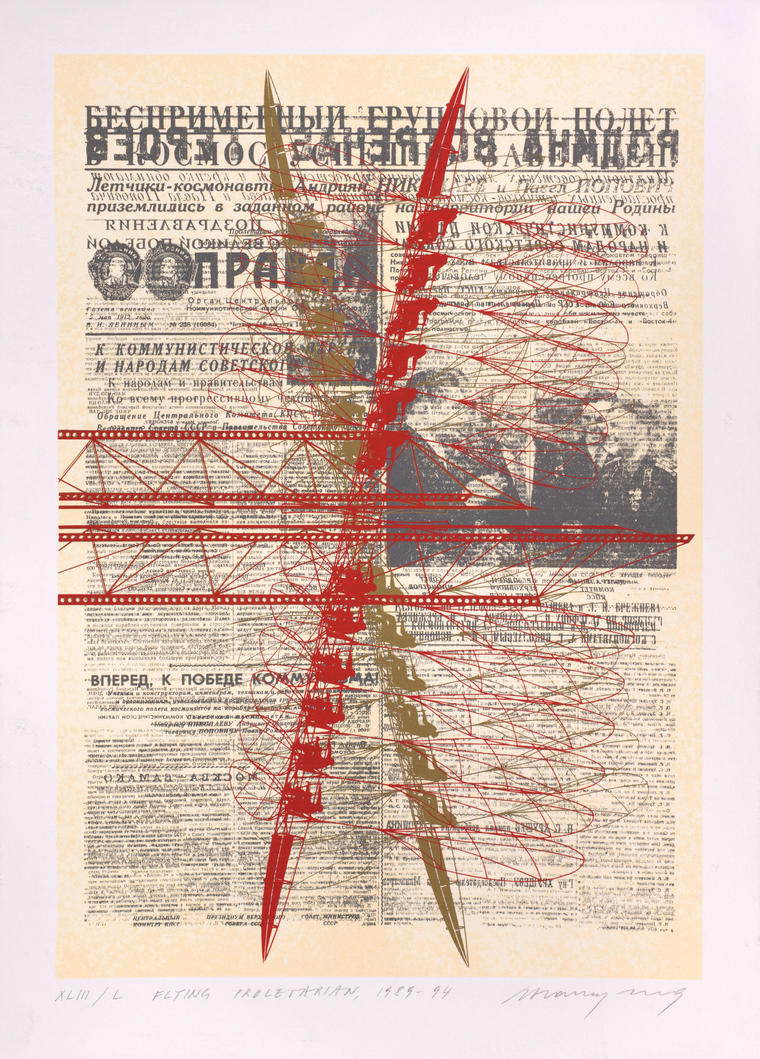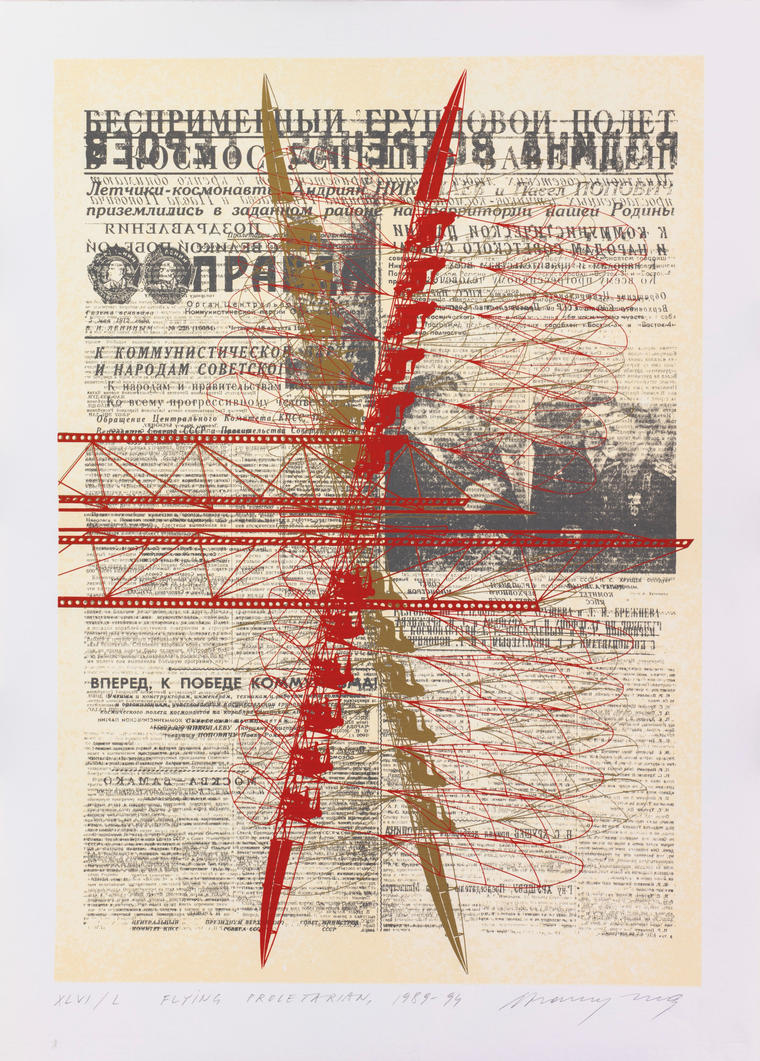
Yuri Avvakumov – one of the main representatives of the «paper architechture», a direction, the name of which he made up himself in the 80’s and put it into global turnover. The most important theme of his work is utopian architectural projects, drawings and models of structures. They are not intended for real implementation in a material, but are independent aesthetic objects. The interest of Avvakumov, a practicing architect, in utopia is connected with rethinking and a new discovery of the heritage of the Soviet avant-garde, in a dialogue with which he enters into his work.
So, in this work Avvakumov addresses to canonical monuments of the avant-garde: Vladimir Tatlin is his main character. The bulk of the work is a wire mesh of «temporal constructions» – scaffold and stairs supporting the construction crane, which, in turn, keeps the aircraft on the wire. Avvakumov uses quotes from the figurative language of modern architects and directly from Tatlin's works. It is known that the subject of air conquering, flying, concerned many avant-garde artists – and now, the hanging model of the aircraft is a reference to the «Flying-Tatlin». The entire composition reminds of Tatlin’s «Monument to the Third International», and the inclined sliding construction crane is a variation of the «Lenin's Tribune» project by Lisitsky. Thin lines, precise proportions, minimalism of expressive means speak of the influence of constructivist aesthetics. It does not immediately become apparent what a shaky design this is: the crane, seems to be barely holding on by the scaffold, the flying machine threatens to collapse. The «moment of balance» captured by Avvakumov also fixes the bright figures of football players, frozen in dynamic poses, climbing to the top. Flight tests threaten to turn into a catastrophe.
The presented work thematically and visually inherits the Avvakumov series «Temporary monuments» from the 80’s (directly – the «Red Tower» work, 1986-1988) and the works from the 90’s (for example, «The Tower of Perestroika» 1990), where the central volumes also represented by thin prefabricated structures. V





